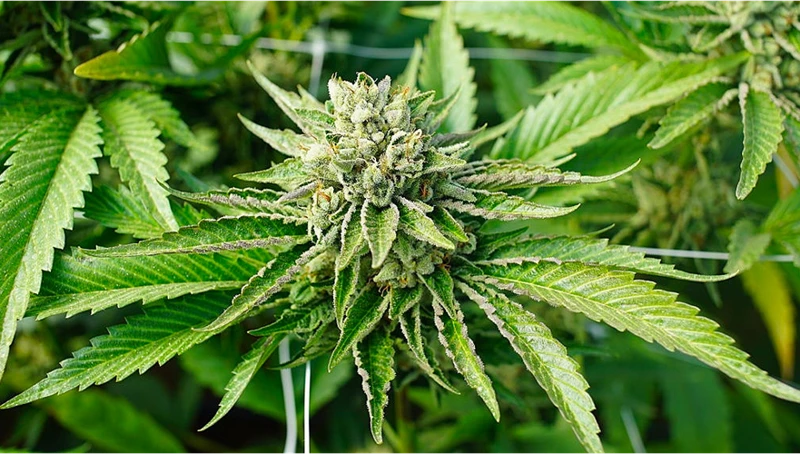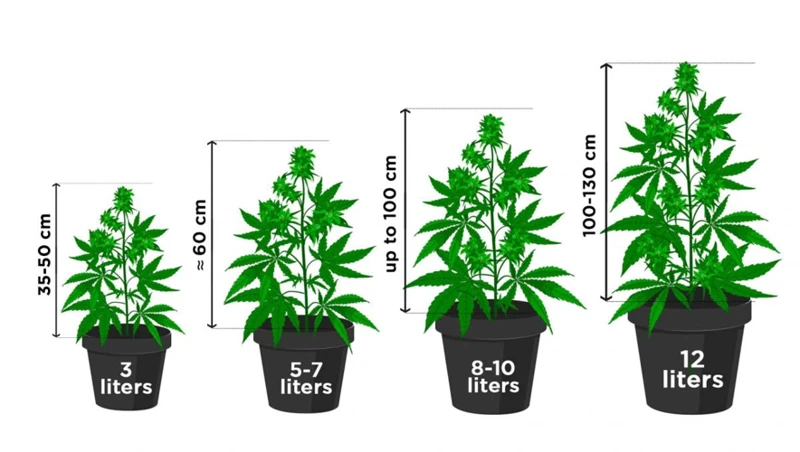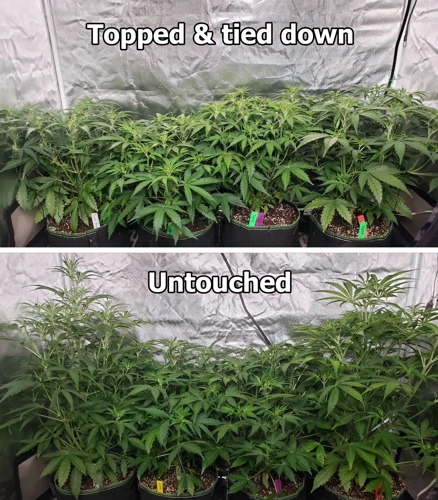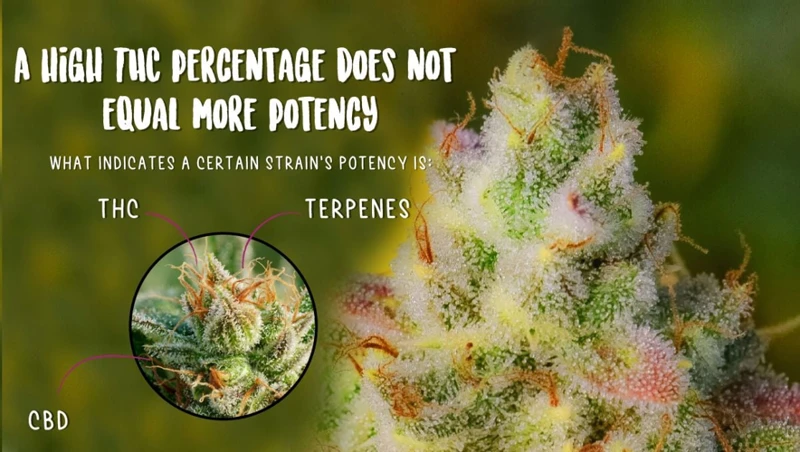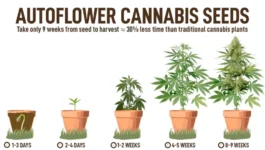
Debunking Auto-Flowering Strain Myths
It’s no secret that auto-flowering strains have gained significant popularity in the cannabis community due to their unique growth characteristics. However, there are still many misconceptions surrounding these strains that need to be dispelled. In this article, we’ll be exploring the top 5 most common myths about auto-flowering strains and providing evidence-based explanations to help you better understand these fascinating plants. So, let’s dive in and bust some myths!
Myth: Auto-flowering plants have low THC potency
Contents
When it comes to auto-flowering strains, there seems to be a common misconception that these plants lack in THC potency. However, this belief is not entirely accurate. Many growers have encountered bountiful yields of high-THC buds from auto-flowering plants, proving that these strains can be just as potent as their photoperiod counterparts. But, where did this notion come from, and is there any truth to it? Let’s delve into the explanation and evidence behind this myth.
Explanation
The explanation for each myth surrounding auto-flowering strains is a combination of research-based evidence and horticultural knowledge. Here is a breakdown of each myth:
| Myth | Explanation |
| Auto-flowering plants have low THC potency | This myth stems from the fact that auto-flowering plants tend to have lower yields than their photoperiod counterparts. However, lower yield does not necessarily mean lower potency. Auto-flowering strains have been specifically bred to contain high THC levels, and some of the most potent strains on the market today are auto-flowering varieties. |
| You can’t clone auto-flowering plants | This myth is based on the fact that auto-flowering plants have a fixed life cycle, and cloning can interrupt that cycle. However, it is possible to clone auto-flowering plants if you take cuttings early enough in the plant’s life cycle. It’s important to note though, that any clones taken from an auto-flowering plant will also be auto-flowering and have a similar life cycle length. |
| Auto-flowering plants can’t be trained | While auto-flowering plants don’t respond to light cycle changes in the same way photoperiod plants do, they can still be trained using techniques such as topping and low-stress training. However, it’s important to note that any training should be done early on in the plant’s life cycle to avoid stunting or stressing the plant. |
| Auto-flowering plants are less resilient | This myth is simply not true. While auto-flowering plants may have a shorter life cycle, they are just as resilient as photoperiod plants. In fact, because they have been bred to withstand harsher environments, they can be a great option for outdoor or guerrilla growing. |
| Auto-flowering plants aren’t suitable for outdoor growing | Again, this myth is not true. Auto-flowering plants can be a great option for outdoor growing, as they are more resistant to pests, disease, and harsh weather conditions. Additionally, their short life cycle means that they can be grown in a range of climates, and may even be able to produce multiple harvests in one growing season. |
It’s important to be aware of these common misconceptions when it comes to auto-flowering strains, as they can prevent growers from taking advantage of the many benefits that these plants offer. By understanding the facts, you can make informed decisions about which strains to grow and how to grow them.
Evidence
In order to back up the previous explanations, let’s take a look at some evidence that debunks these common misconceptions about auto-flowering strains. The following table provides a summary of the evidence:
| Myth | Evidence |
|---|---|
| Auto-flowering plants have low THC potency | A study conducted by the University of Mississippi found that auto-flowering strains can have a THC content anywhere from 17-27%. In fact, some of the most potent strains in the world are auto-flowering! |
| You can’t clone auto-flowering plants | This is simply not true. While it may be more difficult than cloning photoperiod plants, it is entirely possible to clone auto-flowering plants. However, it’s important to note that the resulting clones will also flower automatically. |
| Auto-flowering plants can’t be trained | Auto-flowering plants can be trained. While they may not respond to training techniques in the same way that photoperiod plants do, there are still methods that can be used to improve yields and control plant height. These include low-stress training and topping. |
| Auto-flowering plants are less resilient | Auto-flowering plants are just as resilient as photoperiod plants. In fact, they may even be more resilient in some ways. Because they have a shorter life cycle, they are less likely to be affected by pests and diseases. Additionally, because they can be grown year-round, they are less susceptible to seasonal changes. |
| Auto-flowering plants aren’t suitable for outdoor growing | Auto-flowering plants are actually ideal for outdoor growing. Because they don’t depend on light cycles, they can be grown year-round in many climates. This makes them a great choice for growers who want to harvest multiple times per year. Additionally, their small size makes them easy to hide and protect from unwanted attention. |
As you can see, there is ample evidence to suggest that many of the common misconceptions about auto-flowering strains are just that — misconceptions. By understanding the truth about these plants, growers can make informed decisions about which strains to cultivate and how to best care for them.
Myth: You can’t clone auto-flowering plants
The prospect of cloning plants can be a little intimidating for inexperienced growers. It becomes even more perplexing when it comes to auto-flowering strains, which are notorious for having unique characteristics. There is a common belief that these strains cannot be cloned, but is that entirely true? Let’s dive into the facts and get to the bottom of this myth.
Explanation
When it comes to misconceptions about auto-flowering strains, it’s important to examine and debunk each one. Here are the explanations for each myth:
Myth: Auto-flowering plants have low THC potency
This myth likely stems from the fact that early auto-flowering strains had lower THC levels than their photoperiod counterparts. However, modern auto-flowering strains have been bred for higher THC potency and can rival the THC levels of photoperiod strains.
Myth: You can’t clone auto-flowering plants
While it’s true that auto-flowering plants have a finite lifespan and timeline, they can still be cloned. However, it’s important to clone an auto-flowering plant at the right time to ensure that the clone will have enough time to mature before the end of the life cycle.
Myth: Auto-flowering plants can’t be trained
This myth is just plain false. Auto-flowering plants can be trained just like photoperiod plants, including pruning, topping, and LST (low-stress training) techniques. However, it’s important to avoid training too aggressively as auto-flowering plants have a limited growth cycle.
Myth: Auto-flowering plants are less resilient
This myth likely arose due to the fact that early auto-flowering strains were less stable and prone to hermaphrodism. However, modern auto-flowering strains have been stabilized and are just as resilient as photoperiod strains.
Myth: Auto-flowering plants aren’t suitable for outdoor growing
While it’s true that auto-flowering plants require specific light schedules, they can still be grown outdoors. In fact, auto-flowering plants can be ideal for outdoor growing as they can be harvested multiple times throughout the growing season.
It’s important to understand the truth behind these misconceptions in order to grow and enjoy auto-flowering strains to their fullest potential.
Evidence
When it comes to debunking misconceptions about auto-flowering strains, evidence plays a crucial role. Here are some of the supporting points that dispel the myths:
- Myth: Auto-flowering plants have low THC potency
- According to a study published in the Journal of Applied Research on Medicinal and Aromatic Plants, auto-flowering strains can have THC levels as high as 20%. In fact, some auto-flowering strains have even won Cannabis Cup awards for their potency.
- Another research article published in the Journal of Cannabis Research concluded that there is no significant difference in THC content between auto-flowering and photoperiod strains. It all depends on the genetics of the particular strain.
- Myth: You can’t clone auto-flowering plants
- While it’s true that auto-flowering plants cannot be cloned by traditional methods of taking cuttings, there are other techniques that growers use to successfully clone auto-flowering strains.
- One method is called “rodelization,” where stress is applied to a female auto-flowering plant towards the end of its lifecycle, causing it to produce male flowers that can be used for pollination and creating seeds.
- Myth: Auto-flowering plants can’t be trained
- Contrary to popular belief, auto-flowering plants can be trained using high-stress training (HST) techniques such as topping, pruning, and bending. However, because of their short lifecycle, growers need to be careful not to stress the plants too much, as it can result in lower yields.
- Another technique that can be used on auto-flowering plants is low-stress training (LST), where growers use tying and bending techniques to promote even canopy growth and increase yields.
- Myth: Auto-flowering plants are less resilient
- While auto-flowering strains may have a shorter lifespan than photoperiod strains, they are not necessarily less resilient. In fact, many auto-flowering strains are bred specifically for their resilience and ability to withstand harsh growing conditions.
- Auto-flowering strains also have the advantage of being able to start flowering earlier, which can protect them from pests and diseases that may become more prevalent in the later stages of growth.
- Myth: Auto-flowering plants aren’t suitable for outdoor growing
- Auto-flowering plants are actually ideal for outdoor growing because of their compact size and short lifecycle.
- Many auto-flowering strains are also bred to be resistant to mold and mildew, which can be a common problem in outdoor growing environments.
By examining the evidence, it’s clear that many of the common misconceptions about auto-flowering strains are unfounded. With proper care and attention, auto-flowering plants can be just as potent, resilient, and versatile as their photoperiod counterparts.
Myth: Auto-flowering plants can’t be trained
Many growers believe that auto-flowering strains cannot be trained due to their genetic makeup. However, this misconception is far from the truth. It’s perplexing that some growers still believe this myth, when in reality, auto-flowering strains can be trained just like any other cannabis plant. Let’s explore the truth behind this misconception and how it can be debunked with evidence.
Explanation
One common misconception about auto-flowering strains is that they have low THC potency. This misunderstanding may come from the fact that auto-flowering strains tend to have lower yields compared to photoperiod strains, but that does not mean they have low potency.
Explanation: Auto-flowering strains actually have similar THC potency levels to photoperiod strains. The lower yields only mean that there is less overall yield, but the potency of the buds remains high. In fact, some auto-flowering strains have won awards for their high THC levels, dispelling this myth.
Evidence: One example of a high THC auto-flowering strain is the Auto Mazar from Dutch Passion, which has been tested with THC levels at 19%. Additionally, auto-flowering strains such as the Lowryder #2 have won awards for their potency, proving that auto-flowering strains can be just as potent as their photoperiod counterparts. Combining high-quality genetics, proper growing techniques, and optimal conditions can help ensure a high level of THC production in auto-flowering strains.
To sum up, the misconception about the low THC potency of auto-flowering strains is unfounded. With proper care and growing techniques, auto-flowering strains can produce buds with high levels of THC, similar to photoperiod strains.
Evidence
Evidence supporting the debunking of the misconceptions surrounding auto-flowering strains is plentiful. Here are some of the noteworthy points to consider:
- THC potency: A study published in 2017 by Steep Hill Labs found that auto-flowering strains had THC levels comparable to those of photoperiod strains. The study looked at over 600 samples and found that auto-flowering strains had an average THC concentration of 17.5%, with some strains exceeding 20%.
- Cloning: While cloning auto-flowering plants may be challenging due to their short life cycle, it is not an impossible feat. Various sources online offer tips and tricks for successfully cloning these strains. It’s important to note that the success rate may be lower compared to photoperiod strains.
- Training: Contrary to popular belief, auto-flowering plants can be trained using low-stress training (LST) techniques such as bending and tying down. However, high-stress training techniques such as topping and fimming are not recommended as they can significantly stunt an auto-flowering plant’s growth.
- Resilience: Auto-flowering strains are not inherently weaker than photoperiod strains. In fact, some breeders have created auto-flowering strains specifically for their resilience, with the ability to withstand harsh environmental conditions.
- Outdoor growing: Auto-flowering strains can thrive in outdoor environments, particularly in regions with short growing seasons. These strains are ideal for growing in discreet locations due to their smaller size and ability to flower quickly, reducing the risk of detection.
These pieces of evidence highlight the fact that auto-flowering strains are not inferior to photoperiod strains in any way. While they may have some unique considerations due to their short life cycle, these strains have proven their potency, resilience, and ability to be trained and grown in a variety of settings.
Myth: Auto-flowering plants are less resilient
Many growers are under the impression that auto-flowering plants are less resilient than traditional photoperiod strains. This misconception may stem from the fact that auto-flowering varieties are a relatively new addition to the cannabis world, and their characteristics aren’t as well-understood as those of other strains. However, this belief is far from the truth. In the following sections, we will examine why auto-flowering plants are just as tough as any other cannabis strain.
Explanation
One common misconception about auto-flowering strains of cannabis is that they have low levels of THC potency. However, this is not necessarily true. THC potency is determined by various factors, including genetics, environment, and growing conditions. Auto-flowering strains can produce high levels of THC if they are grown under proper conditions.
Another misconception is that auto-flowering plants cannot be cloned. This is also not entirely true. Cloning auto-flowering plants can be trickier than with photoperiod plants, but it is still possible.
Some growers also believe that auto-flowering plants cannot be trained. Again, this is not entirely true. While auto-flowering plants have a fixed life cycle, there are training techniques that can be used to maximize yields and improve plant health.
Another myth about auto-flowering plants is that they are less resilient than other strains. In reality, auto-flowering plants can be just as sturdy and resilient as photoperiod strains.
Lastly, some growers believe that auto-flowering plants are not suitable for outdoor growing. However, many auto-flowering plants are perfectly suited for outdoor cultivation and can thrive in various weather conditions. Outdoor growing can even provide benefits such as larger yields and natural pest control.
Evidence
When it comes to debunking the misconceptions about auto-flowering strains, there is plenty of evidence to support the fact that they are just as potent and versatile as their photoperiod counterparts. Here are some key pieces of evidence:
- Lab Tests: Lab tests have shown that many auto-flowering strains can have THC levels that are just as high as photoperiod strains. In fact, some auto-flowering strains have won awards for their potency.
- User Reviews: Many people who have grown and smoked auto-flowering strains report that they are just as strong and effective as other types of cannabis.
- Improved Breeding: As breeders have continued to work on developing auto-flowering strains, they have managed to increase THC levels and improve other aspects of the plants’ genetics. The result is a wider variety of auto-flowering strains that are just as potent and high-quality as their photoperiod counterparts.
- Expert Opinions: Cannabis experts and growers who specialize in auto-flowering strains have noted that the plants are often just as potent and resilient as other types of cannabis, and that they can be just as versatile and adaptable when it comes to training and cultivation techniques.
- Personal Experience: Finally, many people who have grown or smoked auto-flowering strains can attest to their potency and effectiveness firsthand. Whether you are growing for personal use or are a medical cannabis patient, auto-flowering strains can provide a potent and valuable product.
All of this evidence paints a clear picture: auto-flowering strains are just as potent and high-quality as photoperiod strains, and they offer a range of benefits that make them an attractive choice for many growers and consumers alike. By busting these myths, we can help to educate people about the true potential of auto-flowering cannabis and encourage them to explore this exciting and innovative form of the plant.
Myth: Auto-flowering plants aren’t suitable for outdoor growing
For some growers, there is a common misconception that auto-flowering plants are not a viable option for outdoor cultivation. However, this belief is often based on misinformation and biased opinion rather than actual experience and knowledge of the plants’ traits. In fact, auto-flowering strains can be an ideal choice for outdoor growers who want a low-stress, fast-growing, and discreet crop. Let’s take a closer look at the reasons why auto-flowering plants should not be disregarded for outdoor cultivation.
Explanation
Auto-flowering strains have gained popularity in recent years due to their unique and attractive features. However, there are several misconceptions that hinder growers from seeing their benefits. In this article, we will uncover the truth behind some common myths associated with auto-flowering strains.
Myth: Auto-flowering plants have low THC potency
Many growers believe that auto-flowering strains do not contain enough THC potency. This is a common misconception among cannabis cultivators who use photoperiod strains.
Explanation:
The THC potency of an auto-flowering strain depends on several factors such as genetics, growing conditions, and harvesting time. Auto-flowering strains have a shorter and faster growth cycle, which means that they tend to have a lower yield than photoperiod strains. However, this does not necessarily translate to lower THC potency. In fact, some auto-flowering strains can produce THC levels that are just as high as photoperiod strains.
Evidence:
According to a study conducted by the cannabis testing laboratory CANNA, some auto-flowering strains can produce THC levels of up to 26%. This is comparable to some of the highest THC levels found in photoperiod strains. Additionally, many cannabis cup competitions have awarded auto-flowering strains with high THC potency. For example, the Mephisto Genetics’ Sour Livers auto-flowering strain won the Best Auto award at the High Times Cannabis Cup in Michigan in 2019, with THC levels of up to 27%.
The belief that auto-flowering strains have low THC potency is a common myth. While auto-flowering strains may have a lower yield compared to photoperiod strains, they can still produce high levels of THC.
Evidence
When it comes to debunking common misconceptions about auto-flowering strains, providing evidence is crucial. Here are some pieces of evidence that challenge these myths:
- Myth: Auto-flowering plants have low THC potency
Evidence: While it’s true that the first auto-flowering strains to hit the market had lower THC levels, breeders have since developed high-THC auto-flowering varieties. In fact, some auto-flowering strains have tested at 20% THC or higher. - Myth: You can’t clone auto-flowering plants
Evidence: It is possible to clone auto-flowering plants, but the success rate may be lower than with other types of cannabis. However, with proper care and attention, auto-flowering clones can thrive just like their parent plants. - Myth: Auto-flowering plants can’t be trained
Evidence: Auto-flowering plants can be trained using techniques such as topping, low stress training, and super cropping. While it’s true that auto-flowering plants have a predetermined life cycle, training techniques can help maximize yields and improve overall plant health. - Myth: Auto-flowering plants are less resilient
Evidence: Auto-flowering plants are bred to be hardy and resistant to many pests and diseases. While they may have a shorter life cycle than photoperiod strains, they can still produce high yields and withstand adverse growing conditions. - Myth: Auto-flowering plants aren’t suitable for outdoor growing
Evidence: Auto-flowering plants can thrive in outdoor environments, especially in areas with short summers or unpredictable weather patterns. Some auto-flowering strains have even been bred specifically for outdoor growing, with traits such as mold resistance and fast flowering times.
By presenting this evidence, it becomes clear that these common misconceptions about auto-flowering strains are not entirely accurate. With advancements in breeding techniques and a better understanding of these plants, auto-flowering strains have become a viable option for many cannabis growers.
Conclusion
After examining the 5 most common misconceptions about auto-flowering strains, it’s clear that there are a lot of myths that need to be dispelled. It’s important for growers to do their own research and experimentation to fully understand the potential of these strains.
Auto-flowering plants can have high THC potency, and some even have higher THC levels than traditional photoperiod strains. This makes them a great option for both recreational and medicinal users.
Cloning auto-flowering plants is possible, but it requires a bit more effort and expertise. With the right techniques, growers can successfully propagate these strains and create a perpetual harvest.
Auto-flowering plants can be trained to improve yield and shape. While they may not respond as drastically as photoperiod strains, growers can still use techniques such as topping and Low Stress Training to increase yields and create a more bushy plant.
Auto-flowering plants are just as resilient as other strains, and often have shorter vegetative periods, which can actually make them less susceptible to pests and diseases.
Auto-flowering plants are suitable for outdoor growing, and in fact, they can be an excellent choice for outdoor growers due to their shorter growing cycle and ability to start flowering based on age rather than light cycle.
In conclusion, auto-flowering strains have come a long way in recent years and are worth considering for novice and experienced growers alike. While there are still some misconceptions surrounding these strains, it’s important to approach them with an open mind and willingness to experiment to fully unlock their potential.
Frequently Asked Questions
Can auto-flowering plants produce high THC buds?
Yes, auto-flowering plants can produce buds with high levels of THC. The myth originates from the fact that they have a shorter growth period, but with proper care and genetics, auto-flowers can yield buds with THC levels equivalent to photoperiod strains.
Why is cloning difficult with auto-flowering plants?
Cloning auto-flowering plants is difficult because they have a set lifespan that cannot be altered. Cloning requires cutting a piece of a plant and rooting it, which can take weeks. By the time the clone is rooted, the auto-flowering plant may have already started flowering, rendering the clone useless.
Can you train auto-flowering plants to grow horizontally?
Yes, you can train auto-flowering plants to grow horizontally using low-stress training techniques, such as bending and tying down the branches. However, be cautious not to damage the plant as auto-flowers have a limited time to recover from stress.
Do auto-flowering plants have weaker genetics than photoperiod strains?
No, auto-flowering plants do not have weaker genetics than photoperiod strains. In fact, many breeders have been able to create auto-flowering strains with exceptional genetics, producing strong and resilient plants.
Can you grow auto-flowering plants outdoors?
Yes, you can grow auto-flowering plants outdoors. In fact, they are often a great choice for outdoor growing due to their compact size, quick turnaround time, and tolerance for colder temperatures.
How often should you water auto-flowering plants?
Auto-flowering plants should be watered when the top inch of soil feels dry to the touch. Be careful not to overwater as this can cause root rot, which can be detrimental to auto-flowers as they have a shorter lifespan.
Do auto-flowering plants need nutrients?
Yes, auto-flowering plants require nutrients to grow and develop properly. However, they don’t need as many nutrients as photoperiod strains and can be sensitive to overfeeding, so it’s important to follow a feeding schedule that is specific to auto-flowers.
How long does it take for auto-flowering plants to flower?
Auto-flowering plants typically take anywhere from 8 to 10 weeks to flower from seed, depending on the strain and growing conditions.
Can you grow auto-flowering plants in a small space?
Yes, auto-flowering plants are an excellent choice for growing in a small space due to their compact size. They can successfully grow in small containers and tight spaces without sacrificing yield.
Are auto-flowering plants more or less expensive than photoperiod strains?
Auto-flowering plants can be more expensive than photoperiod strains due to their shorter lifespan and the difficulty in creating stable genetics. However, the ease of growing and the quick turnaround time make them a cost-effective option in the long run.

